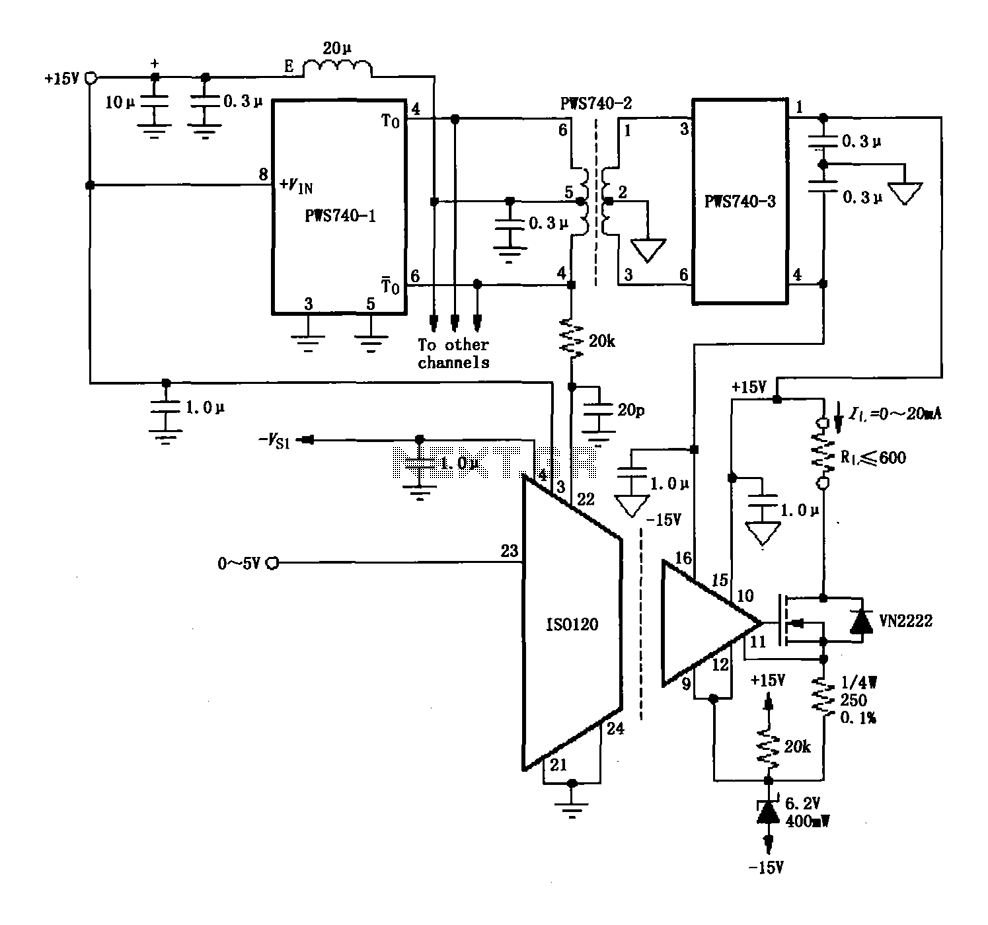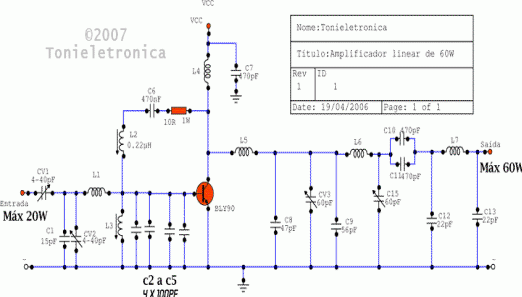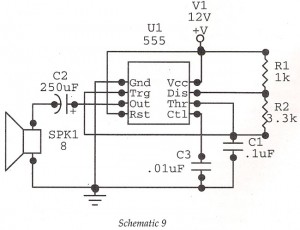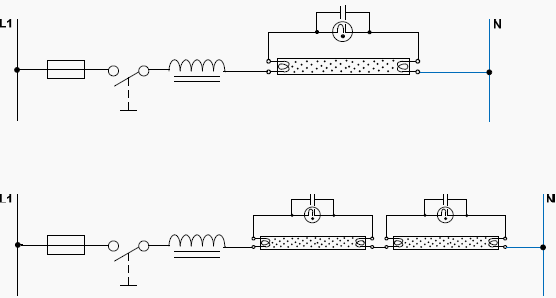
Easy intercom 2 wire circuit
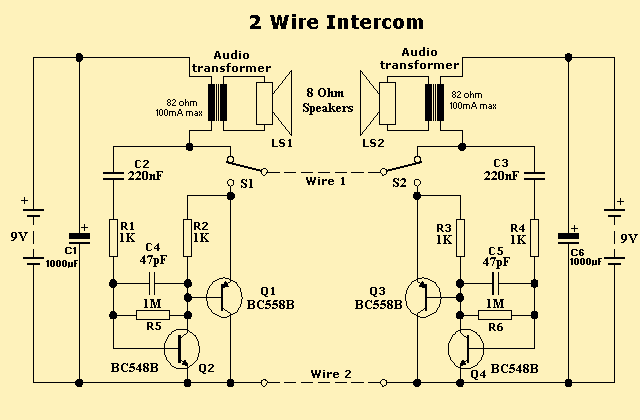
This Intercom is powered by two 9-volt batteries and uses only current when the Intercom is used. Both units are connected via a two-wire little cable or simply two wires (dotted lines). The loudspeakers act both as loudspeakers and as a microphone. When you press S1 and speak into the loudspeaker, then this signal is amplified by the transistor stage and made audible in the right loudspeaker and vice-versa. An added benefit of this system is that when the switch is pressed, it is quiet, not even annoying noise. This circuit has worked for me to my full satisfaction for many years now. I get regular emails with complaints that there is no audio output when the button is pressed. As it turns out, the problem is always that a low-impedance loudspeaker is used and although the circuit is working normally, there is no audio or very little. Indeed it may be difficult sometimes to obtain high-impedance loudspeakers, which probably is that by modern radios the final audio stage is a transistor amplifier and they can provide a lot more current than a tube. To accommodate those in that situation, below is a solution which will solve the problem by using an audio transformer with a ratio of 1:2 or 1:4 to 'up' the impedance. What that means is that the ohm's value at the primary side of this transformer is about 82 ohms. That will accommodate about 100mA max and because the collector voltage is pretty 'nil', it is impossible for the transistor to get hot. If it does, you have the incorrect transformer!
The described intercom circuit operates on a straightforward principle, utilizing two 9-volt batteries as its power source. The system comprises two units connected via a two-wire cable, which allows for bidirectional audio communication. Each unit incorporates a loudspeaker that functions both as an audio output device and as a microphone, enabling full-duplex communication.
When the user presses switch S1, their voice is captured by the loudspeaker, which acts as a microphone. The captured audio signal is then amplified by a transistor stage, ensuring that the sound is audible in the opposite unit's loudspeaker. This design minimizes background noise, providing a clean audio experience during operation.
A critical aspect of this intercom system is the requirement for high-impedance loudspeakers. The use of low-impedance loudspeakers can lead to insufficient audio output, even if the circuit is functioning correctly. To address this issue, an audio transformer can be integrated into the design. The transformer should have a turns ratio of either 1:2 or 1:4, which effectively increases the impedance seen by the circuit.
For instance, with a primary impedance of approximately 82 ohms, the transformer allows for a maximum current of around 100 mA. This configuration ensures that the transistor remains cool during operation, as the collector voltage is minimal. If overheating occurs, it indicates that an incorrect transformer has been used, necessitating reevaluation of the components in the circuit.
This intercom design has proven reliable over time, but attention to component specifications, particularly the impedance of the loudspeakers and the transformer, is crucial for optimal performance.This Intercom is powered by two 9volt batteries and uses only current when the Intercom is used. Both units are connected via a two-wire little cable or simply two wires (dotted lines). The loud speakers act both as loudspeaker and as a microphone. When you press S1 and speak into the loudspeaker then this signal is amplified by the transistor stage and made audible in the right loudspeaker and vice-versa. An added benefit of this system is that when the switch is pressed it is quiet, not even annoying noise.
This circuit has worked for me to my full satisfaction for many years now. I get regular emails with complaints that there is no audio output when the button is pressed. As it turns out, the problem is always that a low-impedance loud speaker is used and although the circuit is working normally there is no audio or very little. Indeed it maybe difficult sometimes to obtain high-impedance loudspeakers, which probably is that by modern radio's the final audio stage is a transistor amplifier and they can provide a lot more current than a tube.
To accommodate those in that situation, below is a solution which will solve the problem by using a audio transformer with a ration of 1:2 or 1:4 to 'up' the impedance. What that means is that the ohm's value at the primary side of this transformer is about 82 ohms. That will accomodate about 100mA max and because the collector voltage is pretty 'nil', it is impossible for the transistor to get hot.
If it does, you have the incorrect transformer! 🔗 External reference
The described intercom circuit operates on a straightforward principle, utilizing two 9-volt batteries as its power source. The system comprises two units connected via a two-wire cable, which allows for bidirectional audio communication. Each unit incorporates a loudspeaker that functions both as an audio output device and as a microphone, enabling full-duplex communication.
When the user presses switch S1, their voice is captured by the loudspeaker, which acts as a microphone. The captured audio signal is then amplified by a transistor stage, ensuring that the sound is audible in the opposite unit's loudspeaker. This design minimizes background noise, providing a clean audio experience during operation.
A critical aspect of this intercom system is the requirement for high-impedance loudspeakers. The use of low-impedance loudspeakers can lead to insufficient audio output, even if the circuit is functioning correctly. To address this issue, an audio transformer can be integrated into the design. The transformer should have a turns ratio of either 1:2 or 1:4, which effectively increases the impedance seen by the circuit.
For instance, with a primary impedance of approximately 82 ohms, the transformer allows for a maximum current of around 100 mA. This configuration ensures that the transistor remains cool during operation, as the collector voltage is minimal. If overheating occurs, it indicates that an incorrect transformer has been used, necessitating reevaluation of the components in the circuit.
This intercom design has proven reliable over time, but attention to component specifications, particularly the impedance of the loudspeakers and the transformer, is crucial for optimal performance.This Intercom is powered by two 9volt batteries and uses only current when the Intercom is used. Both units are connected via a two-wire little cable or simply two wires (dotted lines). The loud speakers act both as loudspeaker and as a microphone. When you press S1 and speak into the loudspeaker then this signal is amplified by the transistor stage and made audible in the right loudspeaker and vice-versa. An added benefit of this system is that when the switch is pressed it is quiet, not even annoying noise.
This circuit has worked for me to my full satisfaction for many years now. I get regular emails with complaints that there is no audio output when the button is pressed. As it turns out, the problem is always that a low-impedance loud speaker is used and although the circuit is working normally there is no audio or very little. Indeed it maybe difficult sometimes to obtain high-impedance loudspeakers, which probably is that by modern radio's the final audio stage is a transistor amplifier and they can provide a lot more current than a tube.
To accommodate those in that situation, below is a solution which will solve the problem by using a audio transformer with a ration of 1:2 or 1:4 to 'up' the impedance. What that means is that the ohm's value at the primary side of this transformer is about 82 ohms. That will accomodate about 100mA max and because the collector voltage is pretty 'nil', it is impossible for the transistor to get hot.
If it does, you have the incorrect transformer! 🔗 External reference
